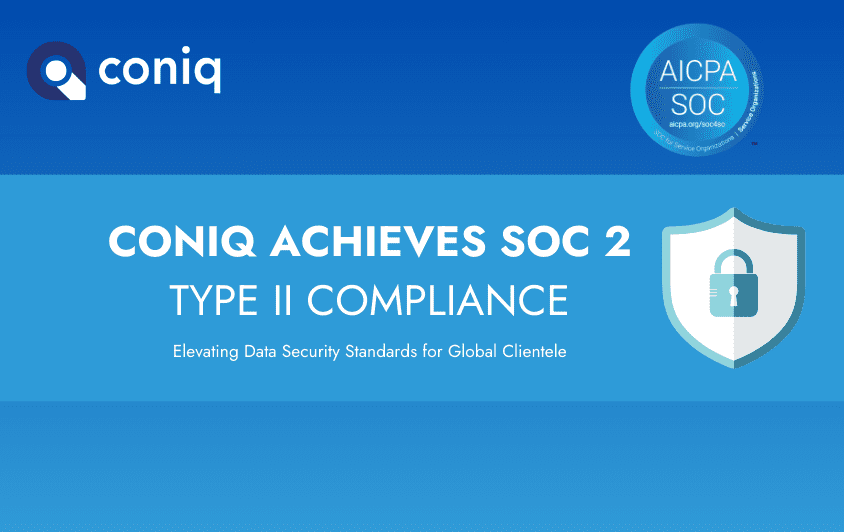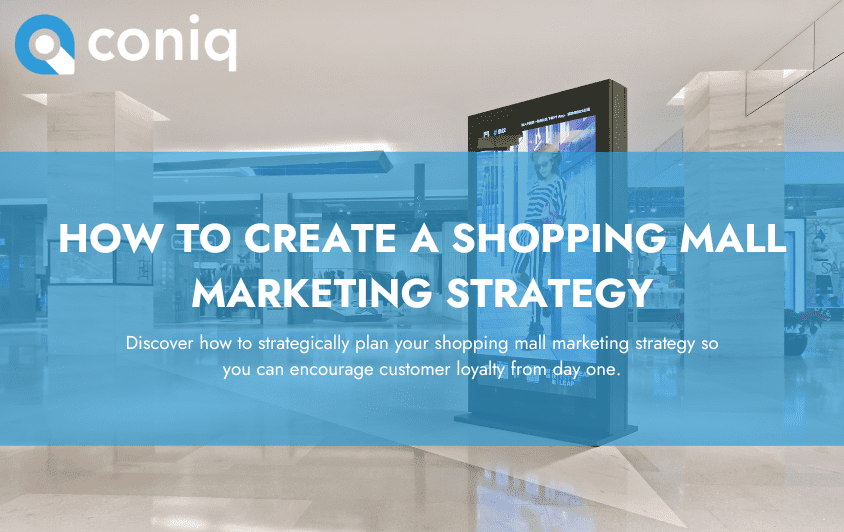The pivot towards digital innovation in retail has seen data emerge as a tool to enhance competitive advantage. As a result, retail destinations are constantly looking to get more of it! Today, shopping malls are discovering new ways of understanding their customers- using data.
There are numerous tools and solutions that can be used to collect customer data- the best being an all-in-one solution, like Coniq’s Total customer engagement platform, enabling the seamless collection of data across all physical (e.g., in-store) and digital (e.g., e-commerce or social) channels.
But why is data so important? The answer is simple- collecting data allows you to understand who your customers are and what they expect from you. Without it, retail destinations cannot deliver what their customers want nor provide the experiences that their shoppers expect!
Failing to understand your customers can lead to irregular customer journeys, frustrated shoppers, and even unnecessary costs for your mall. Indeed, the UK retail industry is said to spend a staggering £102 billion each year on retail experiences! Consequently, those experiences must meet their customer’s needs. Rich data can provide you with a complete profile of your customers and even help you identify your potential customers too! Allowing you to personalize the experience you bring to each segment or individual.
The type of data you collect and how you use it can help you optimize your marketing strategies and ensure that you are engaging the right shoppers with the right content- at precisely the right time. And the best part? You should be able to track your influence on customer behavior by monitoring patterns in the data. This can help you ensure that your marketing strategies work and improve your ROI.
Sound good? Ok, but where do you start?
Market Research Software
Firstly, learn the basics of who is around you and map your potential audience. Trade areas can change, meaning customer engagement will shift with them. Track the demographic makeup within a 5-mile radius using market research tools to see how customers interact in your area. This will give you a better idea of what data you need to collect to build your customer personas.
Social Media
The list of social media platforms continues to grow. As younger audiences drive new retail trends, leveraging your social media platform can be a great way to collect data on your customers. Social sites often have built-in analytics tools to help businesses track trends, patterns, and engagement rates. More than ever, retail destinations are leveraging social media to better understand customer preferences.
Start by monitoring your post engagement. This includes tracking the number of likes, comments, shares, and new followers you gain per post. This can help you gauge what customers respond to and what they are most likely to engage with. Social media can also give you a great deal of information about your customers- who they are, where they are, and who else they shop with! This data can be invaluable for building customer profiles, personalizing your marketing campaigns, and boosting brand engagement.
Building Customer Profiles
To start building up your customer profiles, you need to begin by collecting primary, first-party data. First-party data refers to any direct information collected from your audience using software and systems that you own. For example, collect primary data using services you already offer by creating simple sign-up forms or landing pages for things like Wifi, competitions or events you run, and monthly newsletters.
As long as customers feel they are receiving value in exchange for the data they share with you, you will be able to collect the information you need to start understanding and communicating with them effectively. The data you collect will help you build individual customer profiles – this will help you visualize who it is that you are trying to target and serve as the basis for your customer segments.
Ideally, you should be collecting at least some of these data points:
- Identification data (E.g., Name, email address, or telephone number): this is crucial if you want to communicate with customers.
- Demographic data (E.g., Birthday, age, or gender): any of these data points will give you greater insight into who your shoppers are and collecting these alongside identification data will help you target customers with content that’s relevant.
- Geography data (E.g. An area code or country): Similar to the previous data points, this will help you understand where your shoppers are coming from, which will help you communicate with them in the most relevant manner, with the most relevant content. This data, with additional geographical market research, could be extremely valuable to define your key target segments.
Customer Engagement Solutions
Now that you have a basic level of customer data, you can go even further and begin collecting behavioral and transactional data. Your customer profiles will be more complete if you can track their shopping patterns and how they behave in your mall. The richness of this data, alongside the right tools, will enable you to segment more effectively, making individuals feel like they are being targeted directly!
A good customer engagement solution can help you gather data such as:
- How often shoppers come to your mall
- Which stores they shop in
- How often they visit each store
- When they shop (what day/ time they visit)
- ATV (Average Transaction Value): how much they spend per transaction, on average.
- SPV (Spend per Visit): how much they spend per visit
- CLT (Customer Lifetime Value): how much have they spent with you overall
The behavioral and transactional data you have collected should make it a lot easier to understand who you are talking to and what their expectations are. Now that you have a clear view of your customer journey, you can begin to understand their preferences. This makes it a lot easier to show customers content that they resonate with- enhancing your competitive advantage!
Indeed, this data can be used to tailor communications, offers, and rewards, so that each customer feels like they are gaining a unique experience. Customer engagement programs can offer specialist engagement tools, such as proximity marketing and in-app personalization, to help you target customers based on their actions and interests. If you are unsure whether your existing CRM system is optimizing your data, take a look at our article on Signs It’s Time to Upgrade Your Customer Engagement Solution.
(Not so Far into) The Future
At this stage, you have collected a basic level of behavioral and transactional data, which you have used to tailor your marketing approach. Now, you can take it one step further and collect data throughout the customer journey! Doing this can help you personalize your interactions with each shopper and create extra data points that continually make a more sophisticated portrait of your customer.
There is an extensive list of data points that you could be collecting, but customer engagement platforms can help you do this. Platforms like Coniq’s leverage innovative technology to help you collect data from sources such as Geo-location tools, eCommerce sites, product-level data (SKUs), Receipt Scanning and gamification apps.
All of these examples, alongside the ones mentioned in previous sections, allow for the collection of new data points. These technologies are used by some of the most advanced shopping malls in the world and are essentially helping you build the most intricate customer profiles possible. The aim of this is to engage with your shoppers throughout the full omnichannel customer journey…
This is just the beginning of what will be possible. Biometrics and facial recognition may eventually become part of the data collected to ensure that information is secure. It will allow for predictive analytics, which can help retail destinations plan and benefit from the customer journey.
Collecting customer data on your shoppers is easier than you think, so start small and see what you can achieve! The rewards are endless… so start reaping the benefits today.






